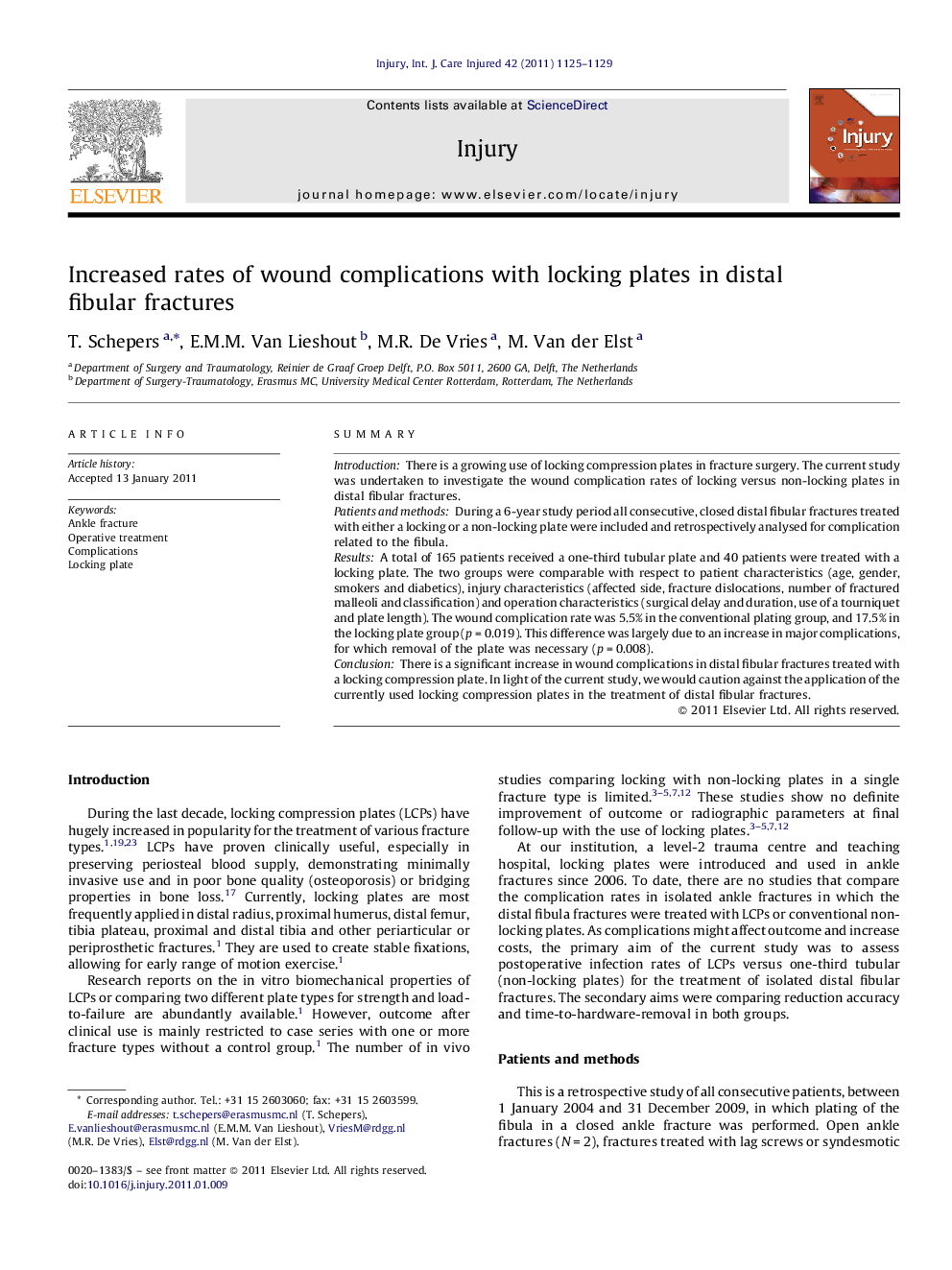| Article ID | Journal | Published Year | Pages | File Type |
|---|---|---|---|---|
| 3240932 | Injury | 2011 | 5 Pages |
SummaryIntroductionThere is a growing use of locking compression plates in fracture surgery. The current study was undertaken to investigate the wound complication rates of locking versus non-locking plates in distal fibular fractures.Patients and methodsDuring a 6-year study period all consecutive, closed distal fibular fractures treated with either a locking or a non-locking plate were included and retrospectively analysed for complication related to the fibula.ResultsA total of 165 patients received a one-third tubular plate and 40 patients were treated with a locking plate. The two groups were comparable with respect to patient characteristics (age, gender, smokers and diabetics), injury characteristics (affected side, fracture dislocations, number of fractured malleoli and classification) and operation characteristics (surgical delay and duration, use of a tourniquet and plate length). The wound complication rate was 5.5% in the conventional plating group, and 17.5% in the locking plate group (p = 0.019). This difference was largely due to an increase in major complications, for which removal of the plate was necessary (p = 0.008).ConclusionThere is a significant increase in wound complications in distal fibular fractures treated with a locking compression plate. In light of the current study, we would caution against the application of the currently used locking compression plates in the treatment of distal fibular fractures.
